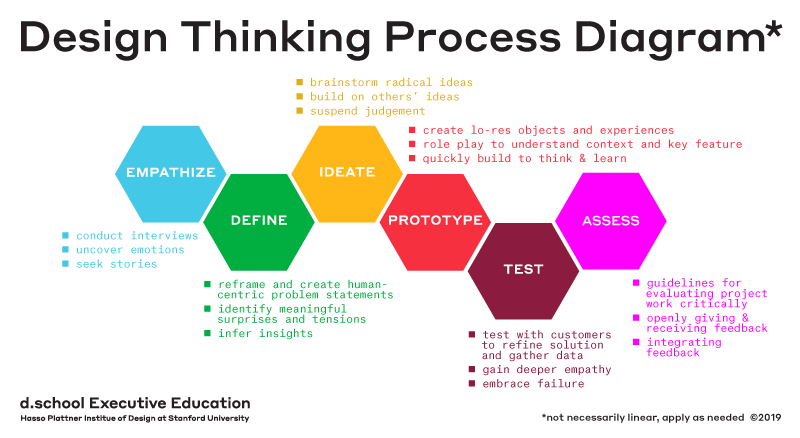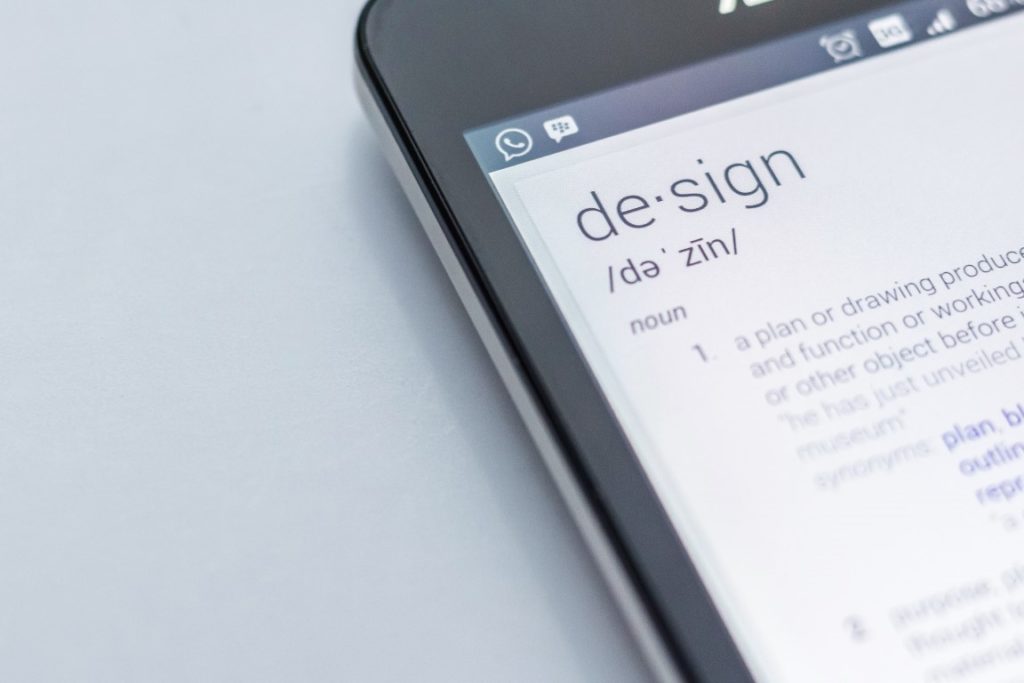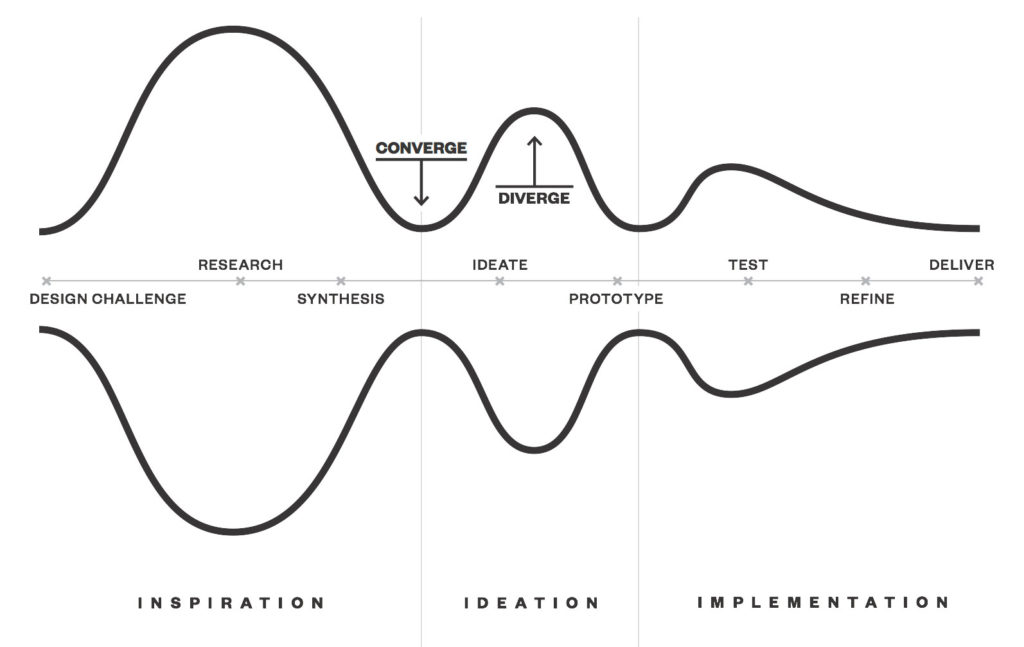As I wrote in my last post, Design Thinking is methodology as a way to innovate and it has different models from different organizations and schools. First of all, I can not confirm that one framework is better than another. It matters how it is used and facilitated.
Some time ago, I had presented Design Thinking to my colleagues. The model of d.school was on my presentation. It is easy, lean and understandable to be used by everyone.
So, In this post will observe the five-stage Design Thinking model proposed by the Hasso-Plattner Institute of Design at Stanford (d.school)

Hasso Plattner Institute of Design: Pioneering Design Thinking at the d.school
The Hasso Plattner Institute of Design at Stanford, commonly known as the d.school, a place for explorers and experimenters at Stanford University
The Institute was founded by Stanford mechanical engineering professor David M. Kelley, six other professors and George Kembel in 2004. The program integrates business, law, medicine, the social sciences and humanities into more traditional engineering and product design education.
We believe everyone has the capacity to be creative. The Stanford d.school is a place where people use design to develop their own creative potential.
quate from dschool.stanford.edu
Key Insights from Stanford d.school
Stanford d.school offers several key insights that can enhance the practice of design thinking:
- Interdisciplinary Collaboration: The d.school emphasizes collaboration among individuals from diverse backgrounds, including designers, engineers, business professionals, and more. This interdisciplinary approach fosters unique perspectives, creative synergy, and holistic problem-solving.
- Bias Towards Action: Stanford d.school encourages a bias towards action and rapid prototyping. By embracing experimentation and learning through doing, designers can uncover valuable insights and refine their solutions iteratively.
- Human-Centered Design: The d.school advocates for a deep understanding of users’ needs, aspirations, and challenges. By empathizing with users, designers can develop solutions that truly resonate with their target audience.
The Design Thinking Process
The five stages of Design Thinking, according to d.school, are as follows: Empathise, Define, Ideate, Prototype, and Test.
1. Empathize
The Empathize mode is the work you do to understand people, within the context of your design challenge. During this stage, we are working with users a lot. Observing what people do and how they interact with their environment gives you clues about what they think and feel.
Sometimes a good conversation can surprise both the designer and the subject by the unanticipated insights that are revealed. View users and their behavior in the context of their lives.
Prepare some questions you’d like to ask, but expect to let the conversation deviate from them. Ask someone to show you how they complete a task. Have them physically go through the steps, and talk you through why they are doing what they do. Ask them to vocalize what’s going through their minds as they perform a task or interact with an object.
Have a conversation in the context of someone’s home or workplace – so many stories are embodied in artifacts. Use the environment to prompt deeper questions.
2. Define
The Define mode of the design process is all about bringing clarity and focus to the design space. The goal of the Define mode is to craft a meaningful and actionable problem statement – this is what we call a point-of-view.
The Define mode is sense-making. It results in your point-of-view (POV): the explicit expression of the problem. The Define mode is also an endeavor to synthesize our findings into insights.
The final point-of-view has to combine these three elements – user, need, and insight – as an actionable problem statement that will drive the rest of your design work.
A good point-of-view is one that:
- Provides focus and frames the problem
- Inspires your team
- Informs criteria for evaluating competing ideas
- Empowers your team to make decisions independently in parallel
- Captures the hearts and minds of people you meet
- Saves you from the impossible task of developing concepts that are all things to all people
3. Ideate
Ideate is the mode of the design process in which you concentrate on idea generation. We ideate in order to transition from identifying problems to creating solutions for our users.
Particularly early in a design project, ideation is about pushing for a widest possible range of ideas from which you can select, not simply finding a single, best solution.
Techniques like Brainstorming, affinity diagram can be used. After collecting as many ideas as you could, ask the team to vote. Two or three ideas that receive the most votes we forward into prototyping.
The determination of the best solution will be discovered later, through user testing and feedback.
4. Prototype
The Prototype mode is the iterative generation of artifacts intended to answer questions that get you closer to your final solution. In these early stages, you should create low-resolution prototypes that are quick and cheap to make (think minutes and cents) but can elicit useful feedback from users and colleagues.
A prototype can be anything that a user can interact with. A wall of post notes, a gadget you put together, a role-playing activity, or even a storyboard.
Don’t spend too long. The point of the stage is to answer a particular question. The prototype should be built with the user in mind.
5. Test
The Test mode is when you solicit feedback, about the prototypes you have created. Show them to your users and have another opportunity to gain empathy for the people you are designing for.
Ideally, you can test within a real context of the user’s life. Try to create a scenario in a location that would capture the real situation. Listen to what they say about it, and the questions they have.
Iteration and making the process your own
Iteration is a fundamental of good design. Design Thinking is an iterative process. You may pivot between stages. And it does not mean failure. Pivoting between modes can create a better solution for our users.
Do not forget to visit the section with free templates and worksheets on the subject.

